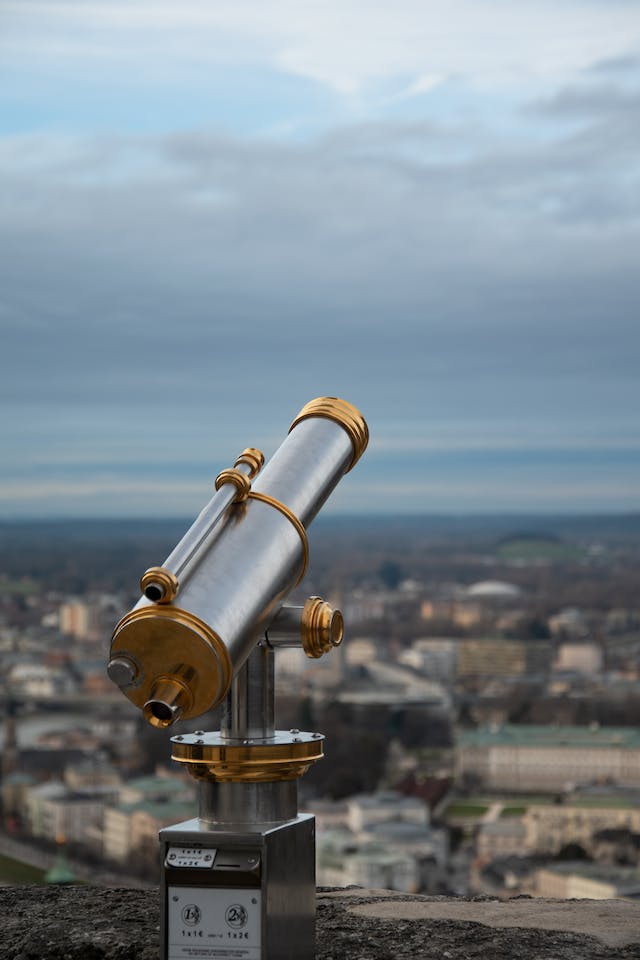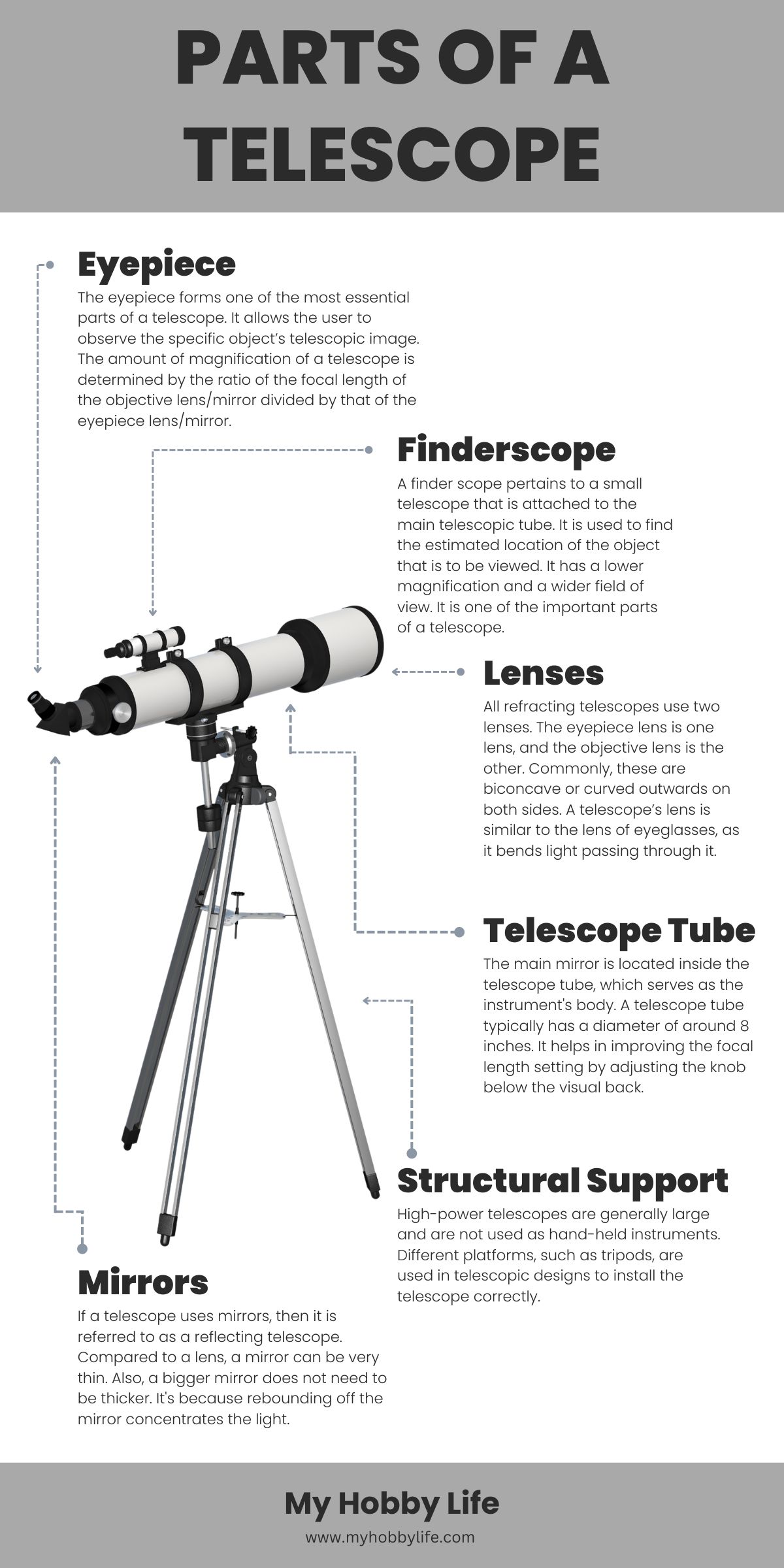Telescopes are arguably some of the most useful devices to have. The reason why telescopes are useful is because of their ability to allow people to see objects from afar. So, if you like to check out details of mountains, rivers, hills, or any wonderful sight in a specific area, you can use a telescope to easily see those details.
In addition, before the space shuttle’s retirement in which orbiters could use it as a space platform to conduct experiments and make observations of Earth and celestial objects, you can also use a telescope to view the moon, other planets in the solar system, and the stars at night.
While telescopes are fairly popular among kids and adults, not a lot of people know that there are different kinds of telescopes to choose from. Here are the things you need to know about the different types of telescopes you can buy and use at home or outdoors.
Refracting Telescope
The earliest telescopes used lenses to collect more light than the human eye could on its own. They focus the light, giving distant things a brighter, clearer, and magnified appearance. This type of telescope is called a refracting telescope.
Most refracting telescopes use two main lenses. The largest lens is called the objective lens, and the smaller lens used for viewing is called the eyepiece lens.
The magnification of a refractor is calculated by dividing the focal length of the objective lens by that of the eyepiece. The magnifying power of a telescope is the ratio of an object’s angular diameter to its naked eye diameter. It depends on the focal length of both lenses.
The size of an image produced by a lens is proportional to the focal length of the lens. The longer the focal length, the larger the image. A telescope’s ability to collect light has an impact on how bright a picture it produces.
The light-gathering power of a telescope is directly proportional to the area of the objective lens. The larger the lens, the more light the telescope can gather. The brightness of images also depends on how big an area the image light is diffused. The smaller the area, the brighter the image.
Advantages and Disadvantages
Some advantages of refracting telescopes are low maintenance, portability, and sharp, bright images.
Some disadvantages are their limited size, chromatic errors, and pricing when compared to designs that use mirrors instead of lenses. Chromatic aberration is a sort of picture distortion that lenses produce. It happens because, as light travels through a lens, various colors are bent through different angles and focused at various locations. It can be fixed by placing a tiny lens behind the objective lens.
Examples of refracting telescopes
Galilean telescope
Did you know that Galileo was the first to make observations of the night sky using a telescope? He created his telescope, known as the Galilean Telescope, in 1609 using a convex objective lens and a concave eyepiece lens after hearing about the invention of the telescope in 1608. His telescope had a threefold magnification capacity. Later telescopes he created could magnify things up to 30 times.
Keplerian telescope
Galileo’s design was enhanced by Johannes Kepler, who created the Keplerian telescope in 1611. It uses a convex lens instead of Galileo’s concave eyepiece. The advantage of this arrangement is that the rays of light emerging from the eyepiece are converging. It allows for a much wider field of view and more eye relief, but the image for the viewer is inverted.
Achromatic telescope
An Achromatic telescope uses an Achromatic lens to correct chromatic aberration. An achromatic lens is a compound lens made with two types of glass with different dispersion. One element, a concave lens made out of Flint glass, has relatively high dispersion, while the other, a convex element made of Crown glass, has lower dispersion. Together, they provide a weak positive lens that will focus light of two distinct wavelengths.
Apochromatic refractors
Apochromatic refractors have objectives built with special, extra-low dispersion materials. They are designed to bring three wavelengths, typically red, green, and blue, into focus in the same plane. Such telescopes contain elements of fluorite or special, extra-low dispersion (ED) glass in the objective and produce a very crisp image that is virtually free of chromatic aberration. Apochromatic refractors are typically more expensive than telescopes of other types with a comparable aperture because of the unique materials required in manufacturing.
Reflecting Telescope
Did you know Isaac Newton developed the reflecting telescope in the 17th century? It was an alternative to the refracting telescope which, at that time, was a design that suffered from severe chromatic aberration.
A reflecting telescope is from the fact that the primary mirror reflects the light to a focus instead of refracting it. The primary mirror often has a concave spherical or parabolic form, which inverts the image at the focal plane as it reflects light. It is located at the lower end of the telescope tube in a reflector and has its front surface coated with an extremely thin film of metal, like aluminum. The back of the mirror is usually made of glass, although other materials have been used from time to time. Since the back of the mirror serves only to provide the desired form and physical support, it does not have to meet the high optical quality standards required for a lens.
Advantages and disadvantages
Reflecting telescopes provide some additional benefits. They are not subject to chromatic aberration because reflected light does not disperse according to wavelength. Additionally, a reflector’s telescope tube is less expensive because it is shorter than a refractor’s tube of the same diameter. As a result, it is easier and less expensive to build a smaller dome to house a reflector.
Lack of portability, less contrast, and more intensive maintenance are some of its disadvantages.
Examples of reflecting telescopes
Gregorian telescope
The Gregorian telescope uses a concave secondary mirror that reflects the image through a hole in the primary mirror, as described by Scottish astronomer and mathematician James Gregory in his book Optica Promota from 1663. It creates an upright image that is good for terrestrial observations.
It is noteworthy that the Solar Maximum Mission (SMM), an Earth-orbiting space observatory, was launched in 1980 and used the Gregorian design.
Newtonian telescope
The first successful reflecting telescope was the Newtonian telescope, which Isaac Newton finished in 1668. It usually has a paraboloid primary mirror but at focal ratios of about f/10 or longer, a spherical primary mirror can be sufficient for high visual resolution. A flat secondary mirror reflects the light to a focal plane at the side of the top of the telescope tube. It is popular among amateur telescope makers as a home-build project since it is one of the simplest and most affordable designs for a given size of primary.
Cassegrain telescope
Laurent Cassegrain of France, a contemporary of Newton, invented another type of reflector called the Cassegrain telescope. It has a parabolic primary mirror and a hyperbolic secondary mirror that reflects the light down through a hole in the primary. The folding and diverging effect of the secondary mirror create a telescope with a long focal length while having a short tube length.
Ritchey–Chrétien telescope
The Ritchey-Chrétien telescope is a specialized Cassegrain reflector that contains two hyperbolic mirrors rather than a parabolic primary. George Willis Ritchey and Henri Chrétien invented this in the early 1910s. It is free of coma and spherical aberration at a nearly flat focal plane if the primary and secondary curvature are calculated correctly, making it well-suited for wide-field and photographic observations.
Catadioptric Telescope
An optical system called a catadioptric telescope combines reflective optics (mirrors) and refractive-type optics (lenses). It is designed to produce images of objects at an infinite distance. The use of both mirror and lens optics has certain advantages in performance as well as in the manufacturing process. The term catadioptric results from two separate words, catoptric refers to an optical system that uses curved mirrors, and dioptric refers to one which uses lenses.
In many instances, the primary mirror’s light beam is reflected down through a hole in the primary mirror by a secondary mirror placed at or close to the corrector. Behind the primary mirror, the image is then formed outside of the telescope tube. This mechanical outcome is helpful because it enables the placement of the eyepiece or other external equipment behind the scope.
Advantages and disadvantages
Catadioptric telescopes are lighter and more compact when compared to telescopes of the same aperture, as is the mount that holds them. So, it is convenient to transport due to its mechanical size and reduced weight. Their ability to easily reproducible refractive elements, commonly referred to as corrector lenses and mirrors with entirely spherical figures lowers the cost of production.
Some of the disadvantages are that catadioptric telescopes may require more frequent optical alignment when compared to refractors. Also, a catadioptric telescope’s moving parts are more complex than those found in a refractor or reflector telescope. It has an inherent optical performance limitation based on the central obscuration of its aperture caused by its secondary mirror.
Examples of catadioptric telescopes
There are four catadioptric telescope designs most commonly used by amateur astronomers. These are:
Maksutov-Cassegrain telescope design
Maksutov-Cassegrain telescopes have been popular because they offer sharp, high-magnification images in a short tube that is easy to use and requires little user maintenance.
Schmidt-Cassegrain telescope design
The standard design of a Schmidt-Cassegrain telescope (SCT) consists of a short tube with a concave spherical primary mirror, a full-aperture corrector lens, and a smaller convex secondary mirror positioned on the optical axis close to the center of the corrector plate.
Schmidt Astrograph telescope design
The catadioptric Astrograph is a telescope designed for doing astrophotography rather than visual observation. Astrographs are mostly used in amateur astronomy to capture photos of numerous objects, but they have also been used for sky surveys and searching for comets and asteroids.
Schmidt-Newtonian telescope design
Schmidt-Newtonian telescopes are a cross between the Schmidt-corrected Cassegrain and a standard Newtonian reflector telescope. They create the image on the side of the tube, closer to the front aperture like the Newtonian. These telescopes tend to have shorter focal lengths, resulting in wider fields of view compared with those obtained with conventional Newtonian reflectors.
Radio Telescope
Radio telescopes collect weak radio light waves, bring them to a focus, amplify it, and make them available for analysis. Radio telescopes are used to study naturally occurring radio light from stars, galaxies, black holes, and other astronomical objects. It can also be used to transmit and reflect radio light off of planetary bodies in our solar system. These specially-designed telescopes observe the longest wavelengths of light, ranging from 1 millimeter to over 10 meters long.
Modern radio telescopes observe a large number of frequencies all at once, with computers dividing the frequency band into as many as several thousand separate channels that may range from tens to hundreds of megahertz. This innovation has changed radio telescopes from black and white cameras to full color.
To detect the faintest signals, the telescope remains staring at its radio source for hours, similar to keeping the shutter of a camera open. The computer software keeps adding the waves together repeatedly to increase the signals from astronomical phenomena and let the random noise signals coming from the receiver and the Earth’s atmosphere average out over time.
Advantages and disadvantages
The main advantage of a radio telescope is that it can go through celestial dust or debris without being reflected or absorbed. That allows researchers to observe what is happening within a dust cloud, a gas giant, or a similar object.
However, radio telescopes are composed of several dozen large, precise antennas instead of a single telescope option. It is necessary because the radio signals they detect are very low in energy. That means an array can demand a lot of land space to be operational.
Examples of radio telescopes
The first radio telescope was invented in 1932 when Karl Jansky at Bell Telephone Laboratories observed radiation coming from the Milky Way. Since then, there are over one hundred radio telescopes that are or have been used
for radio astronomy. It includes both single dishes and interferometric arrays.
In addition to radio telescopes in space, there have been three space-based radio telescope launches by people since 1965. KRT-10, the first one, was affixed to Salyut 6 in orbital space in 1979. Japan sent the second, HALCA, in 1997. The most recent one, named Spektr-R, was sent by Russia in 2011.
X-Ray Telescope
X-rays are so energetic and have such a small wavelength that they tend to pass through most things, including mirrors. If you shot a beam of X-rays directly at a mirror, most of them would pass right through, they would not even see that the mirror was there.
The lenses and mirrors of a conventional telescope simply cannot be oriented for X-ray astronomy. However, if an X-ray barely glances at the mirror’s surface, it will be reflected and behave exactly like an optical photon. The term grazing incidence refers to the angles at which an X-ray might bounce off a mirror in such a manner.
X-ray telescopes need to have mirrors that are made of material that will reflect an X-ray photon and need to be oriented such that the X-rays hit the mirror at that grazing incidence.
So, an X-ray telescope (XRT) is a telescope that is designed to observe remote objects in the X-ray spectrum. To get above the Earth’s atmosphere, which is opaque to X-rays, X-ray telescopes must be mounted on high-altitude rockets, balloons, or artificial satellites.
Advantages and disadvantages
Since the Earth’s atmosphere blocks X-rays, telescopes must be placed on satellites in orbit. It would be unobservable to study areas like the distribution of hot gasses between galaxies and supernova remnants without the use of X-ray telescopes. We can learn more about the universe’s age, composition, and rate of expansion by studying X-ray images. For the same resolving power, X-ray telescopes can be far smaller than radio telescopes.
On the other hand, an X-ray telescope needs to be placed in orbit to capture X-rays. It needs to be built several meters long due to the long focal length. Also, X-ray telescopes generally have much lower collecting powers than other types of telescopes.
Examples of X-ray telescopes
The first X-ray telescope was the Apollo Telescope Mount, which studied the Sun from onboard the American space station Skylab. It was followed during the late 1970s by two High-Energy Astronomy Observatories (HEAOs), which explored cosmic X-ray sources. HEAO-1 mapped the X-ray sources with high sensitivity and high resolution. Some of the more interesting of these objects were studied in detail by HEAO-2, named the Einstein Observatory.
Conclusion
Owning a telescope opens opportunities and lots of discoveries. It is undoubtedly the most important investigative tool in astronomy.
Moreover, aside from knowing the different types of telescopes, and their advantages and disadvantages, it is also essential to be familiar with the different parts of a telescope and some of its terminologies.


